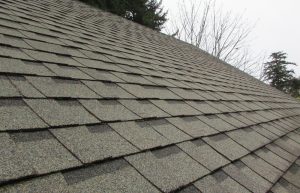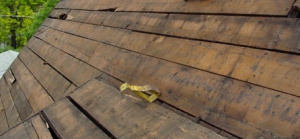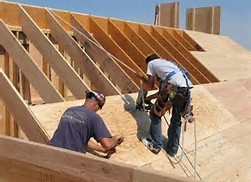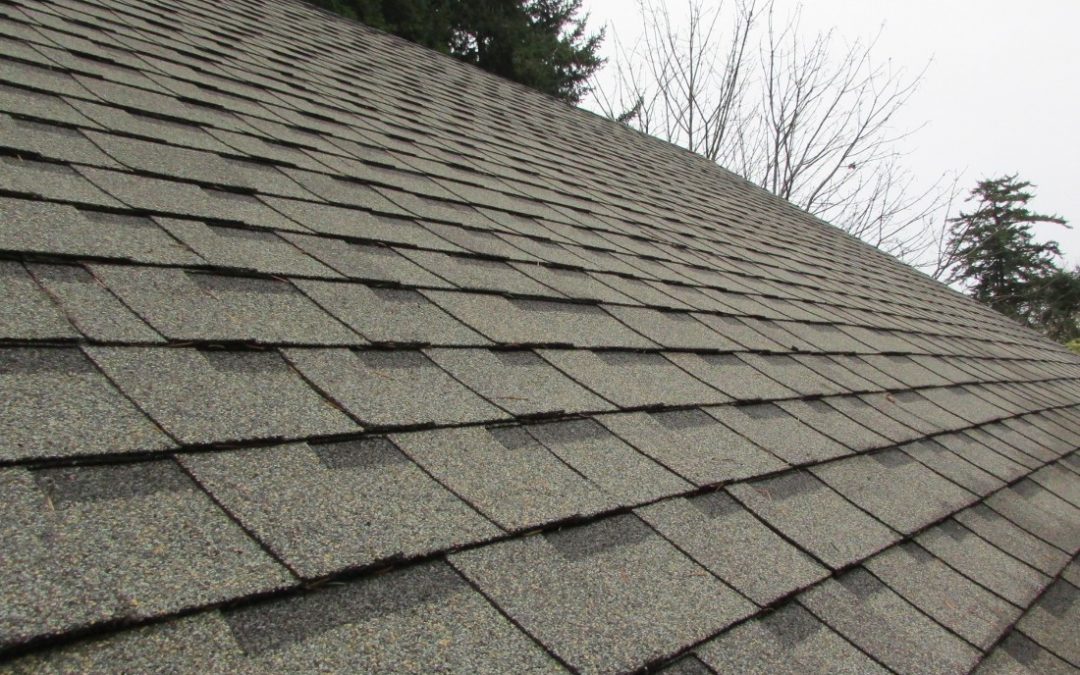
As roofing season is in full swing in Oklahoma and many other areas of the country, I thought Asphalt Shingle installation would be a good topic of discussion. We’ll briefly touch on the basics in an effort to give you a general understanding of this type of roof system. These shingles are most often either known as a 3-tab or architectural type of shingle. Asphalt shingles are generally rated for anywhere between 20 and 35 years, however, depending on climate conditions, the actual life of these shingles is often 5 to 10 years less. Here in Oklahoma, it is not uncommon for asphalt roofing to be replaced in 5-7 years and in some cases even less. This is due to the amount and size of hail we see in this area. The wind is also a factor as in the spring we see wind speeds topping 90 mph with some storms. There are many other components that make up a roofing system, including decking, underlayment materials, eave protection, flashings, ridges and vents.
Asphalt shingles must be installed over a solidly sheathed deck, as per the International Code Council, [905.2.1]. Solid sheathing for roof systems usually consists of an exterior rated plywood or oriented strand board (OSB). Prior to 1970, boards were commonly used for decking. These could have been 1” boards, tongue and groove, or possibly another type of board.


These boards were anywhere from 8” to 12” wide and were nailed together tightly. At that time, each nail was driven into solid wood. Unfortunately the wood was not kiln dried, therefore over time shrinkage of 5% to 10% occurred. Today, it is common to find gaps ranging from ½” to upwards of 1” between these boards. Prior to 2004, the building codes allowed 3 and even 4 layers of shingles to be installed on top of one another, you can imagine how many nails would have been driven into these boards. Current building codes require contractors to remove these layers of asphalt shingles before the installation of new shingles. If your home was built any time pre 1970, this could affect your roof. I recommend checking into this if and when you have a new roof installed.
Another important component of an asphalt roofing system is the underlayment. The underlayment goes under the shingles and on top of the sheathing. Some contractors may insist that a heavy underlayment, or a synthetic, can be installed over the boards we talked about above, and this will prevent any leaking. However, many studies show that it will likely still leak within five years. Any reputable roofing contractor will discuss with you the importance of both a solid deck material as well as the underlayment material.
There are also many requirements on the installation of each individual shingle. How many nails to use, where the nails should be placed and even the size of the nail should all be taken into consideration. Typically, Asphalt shingles should not be installed on any slope less than 2:12. If being installed on a roof with a slope of 4:12 or less, they should be installed in double underlayment shingle fashion. Another requirement of asphalt shingles is what is known as drip edge. Drip edge is a type of metal flashing material that is installed at the outer edge of the roof, this helps to prevent wicking and rotting. There are many different kinds of flashings, including step flashings, kickout flashings, cricket flashings, Z flashings, and many others. Roof flashings are a key part of many different styles of roofing, the lack of or faulty installation of flashings can be detrimental and costly.
Although there is much more detail we could get into when discussing this type of roofing system, this is the basics of Asphalt shingle roof systems and I hope after reading this you have a better understanding of the installation requirements.




Recent Comments